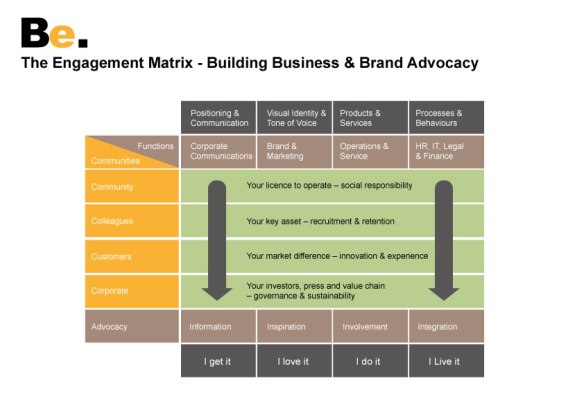
Behaviour change should be front and centre of business transformation, not a nasty afterthought.
Nearly every major business transformation project I’ve been called upon to help out with in the last few years has begun as a technical process change, like the introduction of a new IT platform or sales system. Stands to reason, I guess, given the business climate has hardly been kind to soft skills “leaps of faith”. Capex spend in particular has been under intense scrutiny, doubtless requiring months of fevered business case creation prior to coming before the grand inquisition, namely the torture chamber of the FD.
Yet what these programmes have all lacked has been the recognition of the need for any form of behavioural change imperative, the recruitment or conversion of advocates inside and out as justification for investment in culture development or due attention to leadership by example.
Cue the OD paratroopers and the HR consultancy special forces as a rear guard action.
Too little, too late, costing a fortune.
While Execs have been alert to the need to do different things, there has been little or no recognition of the need to do things differently. I’ve personally seldom seen much evidence of the appreciation for the need for behaviour change to underpin the process change. In short, businesses have invested heavily in designing and starting to develop a shiny new vehicle only to realise after considerable spend that they neither have the leadership capability to unify the workforce to build it nor the skills necessary to drive it out of the garage let alone take to the open road.
So, rather late in the day, they have had to retro-fit the behavioural business case because they have only belatedly managed to get their heads around the ways of working and operating culture required. What chance then of developing future-proof values and behaviours fit for purpose rather than reinforcing the limitations of current leadership norms?
Needless to say, a heavy focus on culture, values and behaviour change at the 11th hour is the corporate equivalent of the playground “wedgie”. It comes as a shock, takes folk by surprise and it feels disturbingly violating and invasive at the same time given it happens with little or no warning.
To make matters worse, quite often the bulk of the corporate budget has been committed by the time the behavioural penny drops. So more often than not, the engagement process has to be managed on the fumes left in the finance tank and employee engagement initiatives become intrusive interventions, late additions to the project timeline forced through using a combination of excessive internal PR and brute force from the HRD or CEO’s offices.
Yet internal stakeholders see through the subterfuge of proactivity disguising the after thought and robbed of the chance to work through the emotional change curve, either resist openly or, more likely, become silent corporate saboteurs. They resent the fact that the required behaviour change has been bullied through rather than led by example. Cue much more anxiety than was necessary, delays and missed deadlines as, not surprisingly, change really struggles to stick.
And guess who notices next? That’s right, those external stakeholders in the matrix, the ones who pay the blessed bills.
Sound familiar?
Seems like a decent business case for changing the way we do change, to me……..
